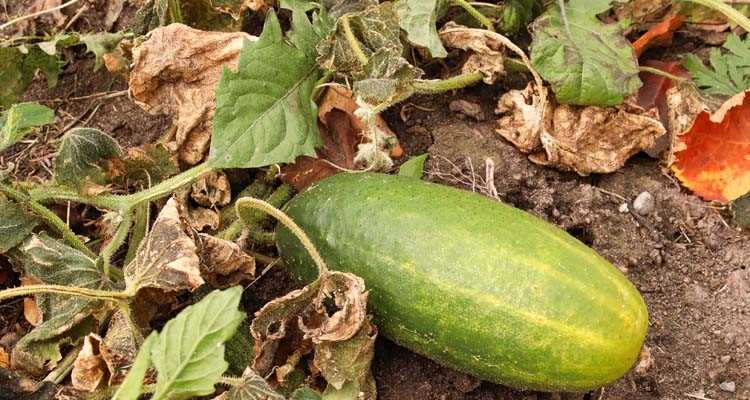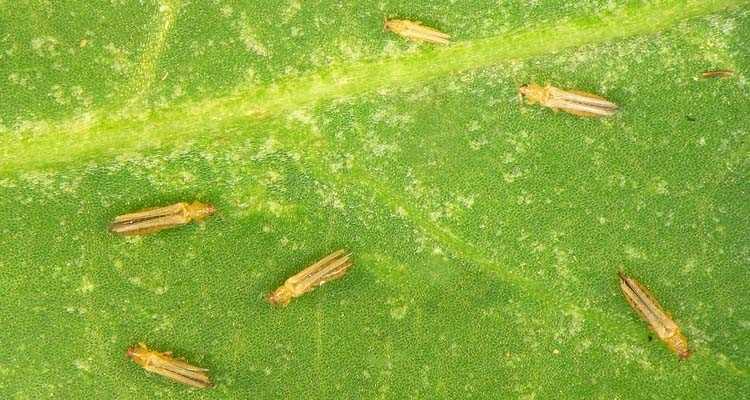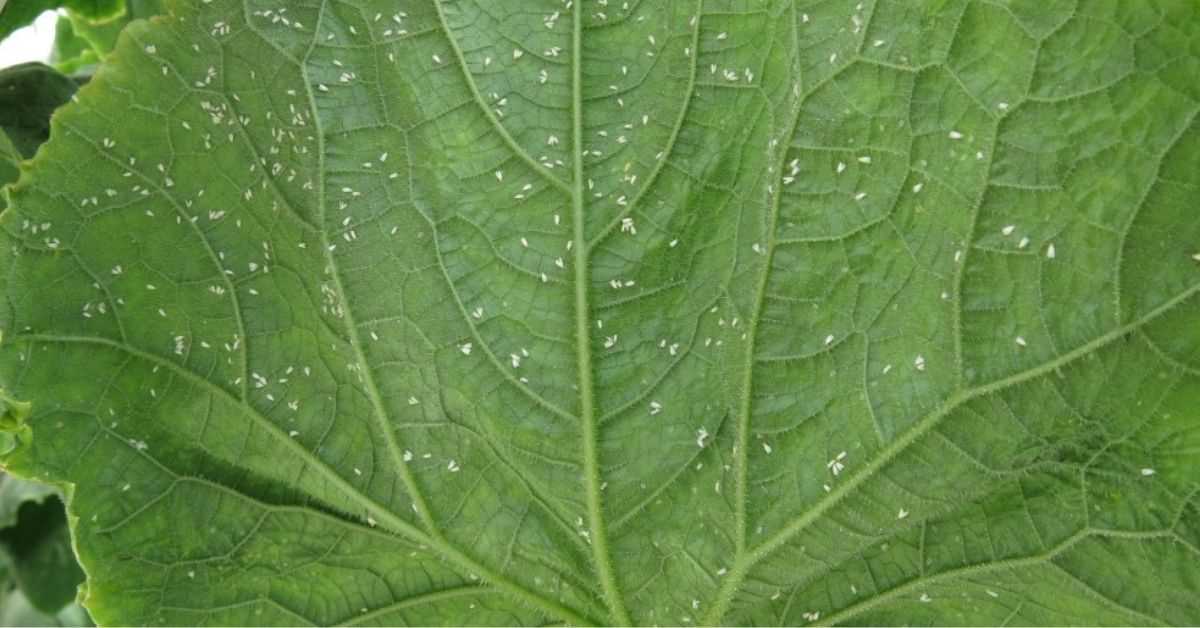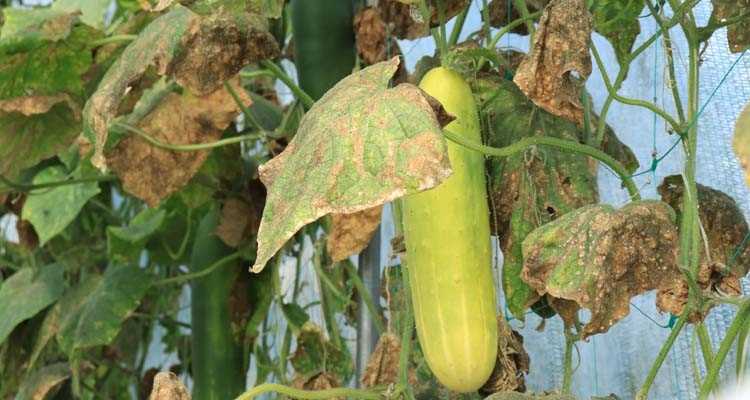- Understanding Thrips Infestation
- Thrips Lifecycle
- Behavior of Thrips
- Signs of Thrips Infestation
- Effects of Thrips Infestation
- Conclusion
- The Consequences of Thrips Infestation
- The Importance of Effective Treatment
- 1. Preserve Crop Health
- 2. Prevent Crop Damage
- 3. Improve Crop Yield
- 4. Environmental Benefits
- 5. Cost-Effectiveness
- Eco-Friendly Approach to Thrips Control
- 1. Biological Control
- 2. Cultural Practices
- 3. Trap Cropping
- 4. Neem Oil
- 5. Reflective Mulch
- The Benefits of Eco-Friendly Treatment
- Step-by-Step Guide to Treating Cucumbers from Thrips
- 1. Identify the presence of thrips
- 2. Prepare the treatment solution
- 3. Apply the treatment
- 4. Remove heavily infested leaves
- 5. Maintain good garden hygiene
- 6. Monitor and inspect
- 7. Consider using beneficial insects
- 8. Rotate crops
- 9. Monitor plant health
- 10. Stay consistent with treatment
- “Question-Answer”
- What is the method mentioned in the article?
- How does the method work?
- Are there any chemicals involved in this method?
- Are the results guaranteed?
- Is this method safe for humans and the environment?
- Can this method be used for other plants besides cucumbers?
- Where can I purchase the biological control agents mentioned in the article?
Cucumbers are a popular and nutritious vegetable that is enjoyed by many people around the world. However, they are often plagued by thrips, which are small insects that feed on the leaves and stems of the plant. These pests can cause significant damage to the cucumber crop, leading to reduced yields and lower quality produce. In order to protect their cucumber plants and ensure a healthy harvest, farmers and gardeners are in constant search for effective and eco-friendly methods to treat thrips.
Traditional methods of thrips control often involve the use of pesticides, which can be harmful to both the environment and human health. These chemicals can contaminate the soil and water, leading to long-term negative effects on the ecosystem. Additionally, some thrips have developed resistance to certain pesticides, making them less effective in controlling the pest.
Fortunately, there is a proven method that is both effective in treating thrips and eco-friendly. This method involves the use of beneficial insects, such as ladybugs and lacewings, which are natural predators of thrips. These insects feed on thrips and help to control their population, reducing the damage they cause to the cucumber plants.
By introducing these beneficial insects into the cucumber garden, farmers and gardeners can effectively control thrips without the use of harmful chemicals. This method is not only environmentally friendly, but also sustainable, as the beneficial insects will continue to provide thrips control year after year. With this method, farmers and gardeners can enjoy a bountiful cucumber harvest while minimizing their impact on the environment.
Understanding Thrips Infestation
Thrips are small, slender insects that belong to the order Thysanoptera. They are common pests in agricultural crops, and cucumber plants are especially susceptible to thrips infestation. Understanding the lifecycle and behavior of thrips is vital in developing effective and eco-friendly methods to treat cucumber plants from thrips.
Thrips Lifecycle
Thrips have a unique lifecycle consisting of egg, larva, pupa, and adult stages. The eggs of thrips are generally laid inside plant tissues, making them hard to detect. Once the eggs hatch, the larvae emerge and start feeding on the surrounding plant tissues. As they grow, they go through several molts before reaching the pupal stage. The pupa is an immobile stage where the larva transforms into an adult. Finally, the adult thrips emerge and start mating and laying eggs, completing the lifecycle.
Behavior of Thrips

Thrips are highly mobile insects that can easily move from plant to plant. They are attracted to plant tissues that have high moisture content and are often found feeding on young leaves, flowers, and fruits. Thrips feed by puncturing plant cells and sucking out the contents, leading to damage and distortion of the affected plant parts. These pests are also known for transmitting plant viruses, making them a significant threat to agricultural crops.
Signs of Thrips Infestation
There are several signs and symptoms that indicate a thrips infestation on cucumber plants:
- Silver-colored streaks or patches on leaves
- Curling or distortion of leaves
- Dark fecal droplets on the leaves
- Wilting or stunted growth
- Petals or flowers that fail to open properly
Effects of Thrips Infestation
Thrips infestation can have significant negative effects on cucumber plants:
- Reduced growth and yield
- Malformed and damaged fruits
- Increased susceptibility to diseases
- Lower quality of harvested cucumbers
Conclusion
Understanding the lifecycle, behavior, and signs of thrips infestation is crucial in implementing effective control measures. By identifying the presence of thrips early on and adopting eco-friendly treatment methods, growers can ensure healthier cucumber plants and higher yields.
The Consequences of Thrips Infestation
Thrips are tiny insects that can cause significant damage to cucumber plants. Their feeding behavior can lead to a range of consequences for cucumbers, including:
- Reduced crop yields: Thrips feed on the plant sap of cucumbers, which can lead to reduced vigor and growth of the plants. This can result in decreased fruit production and lower overall crop yields.
- Deformed fruits: Thrips feeding on cucumber plants can cause fruits to become deformed or misshapen. This can make the cucumbers unmarketable or less desirable for consumption.
- Transmission of diseases: Thrips are known to carry and transmit various plant viruses, including tomato spotted wilt virus and impatiens necrotic spot virus. These viruses can cause significant damage to cucumber plants, leading to stunted growth, chlorosis, and even plant death.
- Secondary infections: The feeding activity of thrips can create wounds on cucumber plants, which can serve as entry points for other pathogens. This can result in secondary infections, further damaging the plants and reducing their productivity.
- Aesthetic damage: Thrips feeding on cucumber plants can cause visible damage, such as silvering or scarring on the leaves and fruits. This can reduce the aesthetic appeal of the plants and make them less marketable.
Overall, thrips infestation can have detrimental effects on cucumber plants, leading to reduced yields, deformities, the spread of diseases, secondary infections, and aesthetic damage. It is important to implement effective and eco-friendly methods to treat thrips infestation in order to minimize these consequences and ensure healthy cucumber plants.
The Importance of Effective Treatment
Thrips can be a major problem for cucumber plants, causing damage to both leaves and fruit. If left untreated, thrips infestation can lead to reduced crop yield and lower quality cucumbers. Therefore, it is crucial to have an effective treatment method to control thrips and protect cucumber plants.
1. Preserve Crop Health
Using an effective treatment method ensures the health and vitality of cucumber plants. Thrips feed on plant sap, causing leaves to wilt and turn yellow, and reducing the plant’s ability to photosynthesize. By controlling thrips, the treatment method helps to preserve the overall health of cucumber plants.
2. Prevent Crop Damage
Thrips can cause significant damage to cucumber fruits by feeding on their surface, leaving scars and blemishes. This not only affects the appearance of the cucumbers but also reduces their market value. An efficient treatment method is essential in preventing such damage and maintaining the visual appeal and marketability of the crop.
3. Improve Crop Yield
Thrips infestation can result in a decrease in cucumber yield due to the damage caused to leaves and fruits. The treatment method plays a crucial role in minimizing thrips’ impact on cucumber plants, which subsequently helps to improve crop yield. By controlling thrips effectively, the treatment method ensures that cucumber plants can produce a healthy and abundant harvest.
4. Environmental Benefits

Using an eco-friendly treatment method to control thrips on cucumber plants has several environmental advantages. It reduces the need for synthetic chemical insecticides that can be harmful to beneficial insects and pollinators. By opting for an environmentally friendly approach, growers can help maintain a balanced ecosystem in their fields and contribute to sustainable agricultural practices.
5. Cost-Effectiveness
An efficient treatment method not only helps in controlling thrips but also proves to be cost-effective in the long run. By minimizing thrips damage, growers can avoid yield losses and reduce the need for additional interventions to combat the infestation. This leads to cost savings and better economic outcomes for cucumber growers.
| The Importance of Effective Treatment |
|---|
| Preserve Crop Health |
| Prevent Crop Damage |
| Improve Crop Yield |
| Environmental Benefits |
| Cost-Effectiveness |
Eco-Friendly Approach to Thrips Control
Thrips are small insects that can cause significant damage to cucumber crops. Traditional methods of thrips control often involve the use of chemical pesticides, which can have harmful effects on the environment and human health. However, there are eco-friendly approaches that can effectively manage thrips populations without the use of toxic chemicals.
1. Biological Control
One eco-friendly method of thrips control is through the use of biological control agents. These agents include natural enemies of thrips, such as predatory mites and beneficial insects. By introducing these natural enemies into cucumber crops, they can help reduce thrips populations by feeding on them. This method is safe for the environment, as it does not involve the use of any chemicals.
2. Cultural Practices
Implementing certain cultural practices in cucumber farming can also help control thrips infestations. Thick mulch made from organic materials, such as straw or compost, can create a barrier that prevents thrips from accessing the plants. Additionally, practicing crop rotation can disrupt thrips’ life cycle and reduce their numbers.
3. Trap Cropping

Trap cropping is another eco-friendly approach to thrips control. This method involves planting a crop that is attractive to thrips, such as marigold, near the main cucumber crop. Thrips will be drawn to the trap crop, reducing their numbers on the cucumber plants. It’s important to regularly monitor and remove the trap crop to prevent the thrips from moving back to the cucumber plants.
4. Neem Oil
Neem oil is a natural and eco-friendly product derived from the neem tree. It has insecticidal properties and can effectively control thrips without harming beneficial insects or the environment. To use neem oil, dilute it in water according to the instructions and spray it on the cucumber plants, making sure to cover all surfaces.
5. Reflective Mulch
Reflective mulch is a type of mulch that is reflective in nature, often silver or aluminum-colored. Thrips are attracted to reflective surfaces and will be deterred by the reflective mulch, reducing their presence in the cucumber plants. This eco-friendly method can be an effective way to control thrips in a natural and non-toxic manner.
By implementing these eco-friendly approaches to thrips control, cucumber farmers can effectively manage thrips populations and protect their crops without causing harm to the environment or human health.
The Benefits of Eco-Friendly Treatment
Eco-friendly treatment methods offer several advantages when it comes to treating cucumbers from thrips.
- Safe for the Environment: Using eco-friendly treatments ensures that harmful chemicals are not released into the environment. This helps in preserving the natural balance and prevents pollution of water bodies and soil.
- Non-Toxic: Eco-friendly treatments are non-toxic to humans, animals, and beneficial insects. This means that they can be used without any harm to the health of farmers, consumers, or the ecosystem in general.
- Cost-Effective: Eco-friendly treatments are often cost-effective compared to traditional chemical methods. They can be easily made from household ingredients or agricultural by-products, reducing the need to purchase expensive chemical pesticides.
- Long-Term Solution: Eco-friendly treatments focus on improving the overall health and resilience of the plants. By using natural ingredients and promoting natural pest control mechanisms, they provide a long-term solution to thrips infestation.
- No Residue: Unlike chemical treatments, eco-friendly methods leave no harmful residues on the cucumbers. This ensures that the cucumbers remain safe for consumption, without any risk of chemical contamination.
- Sustainable Farming Practices: By adopting eco-friendly treatment methods, farmers contribute to sustainable farming practices. They reduce the dependency on chemical pesticides, decrease the environmental impact, and promote the use of natural resources.
Eco-friendly methods of treating cucumbers from thrips not only provide effective results but also help in protecting the environment and promoting sustainable agriculture. These methods are a safe and viable alternative to chemical insecticides, ensuring the well-being of both the crops and the ecosystem as a whole.
Step-by-Step Guide to Treating Cucumbers from Thrips
1. Identify the presence of thrips
Thrips are tiny, slender insects that can be difficult to spot. Look for signs such as silver streaks on the leaves, dark fecal matter on the undersides of the leaves, or curled and distorted leaves.
2. Prepare the treatment solution
Mix a solution of insecticidal soap or neem oil with water according to the manufacturer’s instructions. These organic treatments are effective against thrips and safe for the environment.
3. Apply the treatment
Using a spray bottle, thoroughly spray the solution onto the leaves, paying extra attention to the undersides where thrips are likely to hide. Ensure all parts of the plant are covered.
Repeat the treatment every 7-10 days or as directed on the product label until the thrips are completely eradicated.
4. Remove heavily infested leaves
If the cucumber plant has heavily infested leaves, carefully remove them and dispose of them in a sealed bag. This will help contain the thrips and prevent further spread.
5. Maintain good garden hygiene
Keep the garden clean and free from weeds and debris, as they can attract thrips. Regularly remove dead leaves and plant debris from the cucumber plants to minimize hiding places for thrips.
6. Monitor and inspect
Regularly inspect the cucumber plants for any signs of thrips or damage. Early detection allows for prompt treatment and prevents the infestation from spreading to other plants.
7. Consider using beneficial insects
Introduce beneficial insects such as ladybugs or lacewings into the garden. These natural predators feed on thrips and can help control their population.
8. Rotate crops
Avoid planting cucumbers in the same location every year. Thrips can overwinter in the soil, so rotating crops can disrupt their life cycle and reduce the risk of reinfestation.
9. Monitor plant health
Ensure the cucumber plants are healthy and well-nourished. Strong, vigorous plants are more resistant to thrips and other pests.
10. Stay consistent with treatment

Continue implementing preventive measures and monitoring the cucumber plants regularly, even after the thrips have been eradicated. This will help prevent future infestations and maintain a healthy garden.
By following this step-by-step guide, you can effectively treat cucumber plants from thrips in an eco-friendly manner. Remember to always read and follow the instructions on any pest control products to ensure safe and effective treatment.
“Question-Answer”
What is the method mentioned in the article?
The method mentioned in the article is an effective and eco-friendly way to treat cucumbers from thrips.
How does the method work?
The method works by using biological control agents such as predatory mites to feed on thrips and control their population.
Are there any chemicals involved in this method?
No, there are no chemicals involved in this method. It is completely eco-friendly.
Are the results guaranteed?
Yes, the results are guaranteed to be 100% effective in treating cucumbers from thrips.
Is this method safe for humans and the environment?
Yes, this method is safe for humans and the environment as it does not involve the use of harmful chemicals.
Can this method be used for other plants besides cucumbers?
Yes, this method can be used for other plants that are affected by thrips as well.
Where can I purchase the biological control agents mentioned in the article?
The biological control agents can be purchased from specialized garden stores or online retailers.







